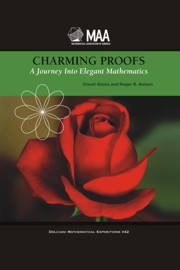Book contents
- Frontmatter
- Preface
- Contents
- Introduction
- 1 A Garden of Integers
- 2 Distinguished Numbers
- 3 Points in the Plane
- 4 The Polygonal Playground
- 5 A Treasury of Triangle Theorems
- 6 The Enchantment of the Equilateral Triangle
- 7 The Quadrilaterals' Corner
- 8 Squares Everywhere
- 9 Curves Ahead
- 10 Adventures in Tiling and Coloring
- 11 Geometry in Three Dimensions
- 12 Additional Theorems, Problems, and Proofs
- Solutions to the Challenges
- References
- Index
- About the Authors
5 - A Treasury of Triangle Theorems
- Frontmatter
- Preface
- Contents
- Introduction
- 1 A Garden of Integers
- 2 Distinguished Numbers
- 3 Points in the Plane
- 4 The Polygonal Playground
- 5 A Treasury of Triangle Theorems
- 6 The Enchantment of the Equilateral Triangle
- 7 The Quadrilaterals' Corner
- 8 Squares Everywhere
- 9 Curves Ahead
- 10 Adventures in Tiling and Coloring
- 11 Geometry in Three Dimensions
- 12 Additional Theorems, Problems, and Proofs
- Solutions to the Challenges
- References
- Index
- About the Authors
Summary
The only royal road to elementary geometry is ingenuity.
Eric Temple BellThe present author humbly confesses that, to him, geometry is nothing at all, if not a branch of art.
Julian L. CoolidgeBook I of the Elements of Euclid is devoted to theorems about parallel lines, area, and triangles. Of the 48 propositions in this book, 23 concern the triangle. Proposition 47 in Book I is perhaps the best-known theorem in mathematics, the Pythagorean theorem. Consequently one can justifiably say that triangles lie at the very core of geometry.
We begin this chapter with several proofs of the Pythagorean theorem, followed by some related results, including Pappus' generalization of the Pythagorean theorem. Consideration of the inscribed and circumscribed circles for general triangles leads to Heron's formula and Euler's inequality. We conclude this chapter with the Erdős-Mordell inequality, the Steiner-Lehmus theorem, some results about triangle medians, and a Lewis Carroll problem.
The Pythagorean theorem
As we mentioned in the Introduction, there may well be more proofs of the Pythagorean theorem than of any other theorem in mathematics. The classic book The Pythagorean Proposition by Elisha Scott Loomis [Loomis, 1968] presents 370 proofs. Alexander Bogomolny's website Interactive Mathematics Miscellany and Puzzles, www.cut-the-knot.org, has 84 proofs (as of 2009), many of them interactive. An argument can be made that the best proof is Euclid's, where the theorem appears as Proposition 47 in Book I of the Elements [Joyce, 1996]: In right-angled triangles the square on the side opposite the right angle equals the sum of the squares on the sides containing the right angle.
- Type
- Chapter
- Information
- Charming ProofsA Journey into Elegant Mathematics, pp. 71 - 90Publisher: Mathematical Association of AmericaPrint publication year: 2010

